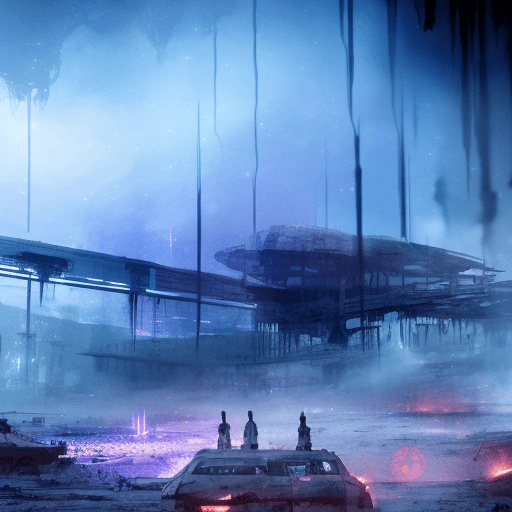One-line summary:
In Station Eleven, Emily St. John Mandel crafts a captivating post-apocalyptic tale that explores the resilience of humanity and the power of art in the face of a devastating global pandemic.
The Collapse of Civilization:
Station Eleven opens with the sudden death of Arthur Leander, a famous actor, on stage during a production of King Lear. Little does the audience know that this tragic event is just the beginning of a global catastrophe. A deadly flu virus, known as the Georgian Flu, spreads rapidly, wiping out the majority of the world’s population within weeks. The collapse of civilization is swift and brutal, leaving survivors to navigate a desolate landscape plagued by violence, scarcity, and a constant struggle for survival.
A Web of Characters:
Mandel weaves together the stories of several characters, both before and after the pandemic, to create a rich tapestry of interconnected lives. Kirsten Raymonde, a member of the Traveling Symphony, travels from settlement to settlement performing Shakespeare plays to bring hope and beauty to the survivors. Jeevan Chaudhary, a paparazzo turned paramedic, witnesses Arthur’s death and becomes one of the few people to survive the initial outbreak. Clark Thompson, Arthur’s close friend, reflects on their past and the world they once knew. These characters, along with many others, form the backbone of the narrative, each offering a unique perspective on the post-apocalyptic world.
The Power of Art:
Throughout Station Eleven, Mandel emphasizes the importance of art and culture in preserving humanity’s spirit. The Traveling Symphony, with their motto “Survival is insufficient,” serves as a symbol of hope and resilience. They believe that art and beauty are essential for survival, not just physical necessities. Kirsten, a member of the Symphony, carries a comic book called “Station Eleven” with her, a relic from the past that holds great significance. This comic book serves as a reminder of the world that was and the potential for a brighter future.
Key Takeaways:
- The fragility of civilization: Station Eleven serves as a stark reminder of how quickly society can crumble in the face of a global catastrophe.
- The resilience of humanity: Despite the dire circumstances, the characters in the novel demonstrate remarkable strength and adaptability.
- The power of art: Mandel highlights the transformative power of art and its ability to provide solace, hope, and a sense of purpose.
- The interconnectedness of lives: The novel explores the intricate web of connections that bind individuals together, even in the most challenging times.
“Survival is insufficient.” – Kirsten Raymonde
In Station Eleven, Emily St. John Mandel masterfully crafts a post-apocalyptic world that is both haunting and beautiful. Through her exploration of the collapse of civilization, the interconnected lives of her characters, and the power of art, she paints a vivid picture of a world on the brink of extinction. Ultimately, Station Eleven is a testament to the resilience of humanity and a reminder of the enduring power of hope and beauty, even in the darkest of times.












